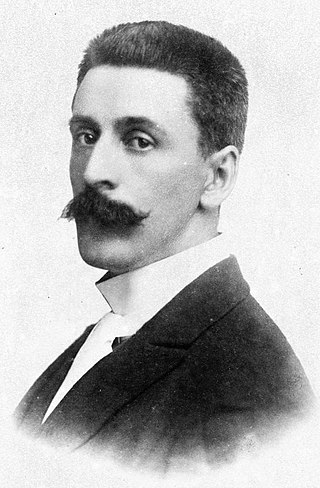
Sir Hans Heysen was an Australian artist. He became a household name for his watercolours of monumental Australian gum trees. One of Australia's best known landscape painters, he is remembered for his depictions of sheep and cattle among massive gum trees against a background of atmospheric effects of light, of men and animals toiling in the Australian bush, and arid landscapes in the Flinders Ranges. He won the Wynne Prize for landscape painting a record nine times.

Sir Ivor Henry Thomas Hele, CBE was an Australian artist noted for portraiture. He was Australia's longest serving war artist and completed more commissioned works than any other in the history of Australian art.

Julian Rossi Ashton was an English-born Australian artist and teacher. He is best known for founding the Julian Ashton Art School in Sydney and encouraging Australian painters to capture local life and scenery en plein air, greatly influencing the impressionist Heidelberg School movement.

Frederick William Leist was an Australian artist. During the First World War, he was an official war artist with Australian forces in Europe.
Gustave Adrian "Gus" Barnes was an English violinist, painter and sculptor with a significant career in South Australia, notably as curator at the Art Gallery.

Sir Charles Lloyd Jones was an Australian businessman and patron of the arts, serving as Chairman of David Jones Limited from 1920 to his death in 1958.

Lindsay Bernard Hall was an English-born Australian artist, teacher and art gallery director.

Desiderius Orban, was a renowned Hungarian painter, printmaker and teacher, who, after emigrating to Australia in 1939 when in his mid-50s, also made an illustrious career in that country.

Sir John William Ashton, OBE, ROI was a prolific Australian Impressionist artist and director of the National Art Gallery of New South Wales from 1937 to 1943.

Richard Hayley Lever was an Australian-American painter, etcher, lecturer and art teacher. His work was part of the art competitions at the 1928 Summer Olympics and the 1932 Summer Olympics.
Edmund Arthur Harvey, also known as E.A. Harvey or Harvey was an Australian artist. Known for his portraits and landscape art, he also taught painting, most notably at the National Art School in Sydney. In a career spanning 67 years, Harvey's works were shown in numerous exhibitions, and made among others, the collections of the Art Gallery of New South Wales and the Tasmanian Museum and Art Gallery.
The Adelaide Easel Club was a society for South Australian painters which broke away from the South Australian Society of Arts in 1892 and which re-merged with the parent organization in 1901.
Brothers William Joseph Wadham (1863–1950) and Alfred Sinclair Wadham (1866–1938) were English painters in watercolors who were active in Australia in the late 19th century. The younger brother invariably used the name Alfred Sinclair.
The South Australian Society of Arts was a society for artists in South Australia, later with a royal warrant renamed The Royal South Australian Society of Arts in 1935.
John Charles Goodchild was a painter and art educator in South Australia who mastered the mediums of pen drawing, etching and watercolors. His wife, Doreen Goodchild, was also a significant South Australian artist.
Lisette Anna Kohlhagen was a South Australian artist.

Marie Anne Tuck, was an artist and art educator in South Australia.

Elizabeth Caroline Armstrong was an Australian artist and art teacher. She was the first in a long line of influential female art educators appointed to the South Australian School of Design. According to one art historian, she was the first woman to hold a teaching post in a major Australian art school.
Elizabeth Maude Vizard-Wholohan, commonly referred to as Mrs Wholohan, was a South Australian artist and benefactor.
Kathleen Margaret Sauerbier was a South Australian pre and post-war Modernist artist who painted landscapes, portraits and still-life, mainly in oils. Her artworks are held in the National Gallery of Australia in Canberra, the Art Gallery of South Australia and at the University of Western Australia as well as numerous private collections.












